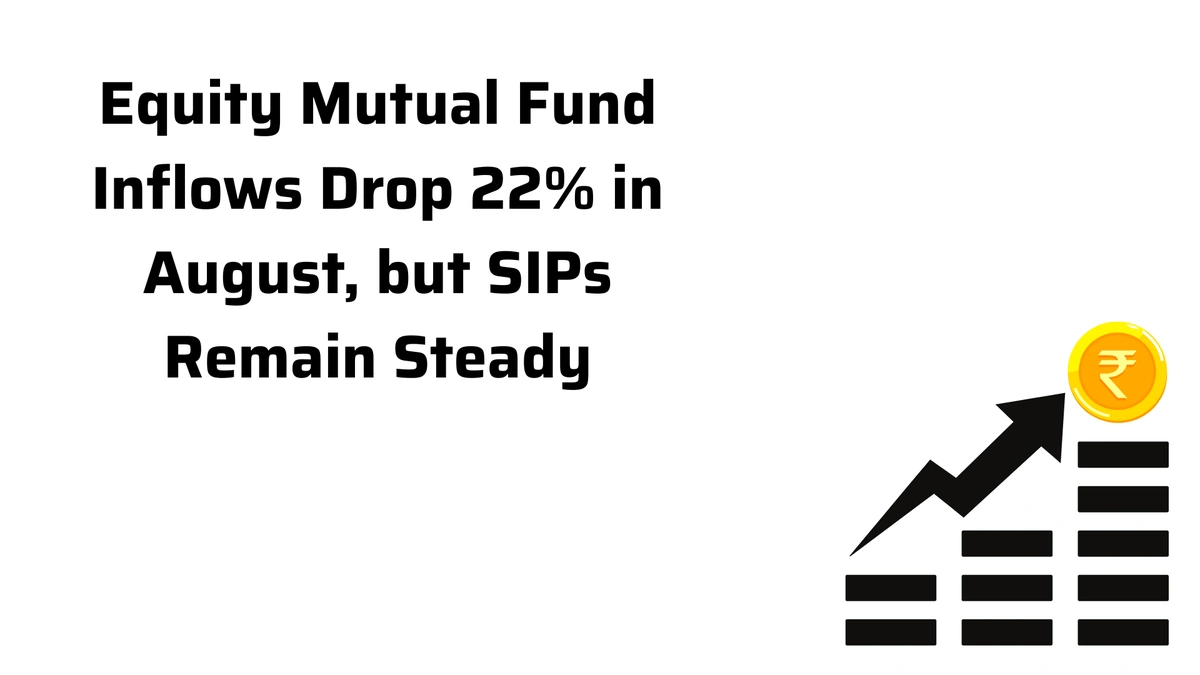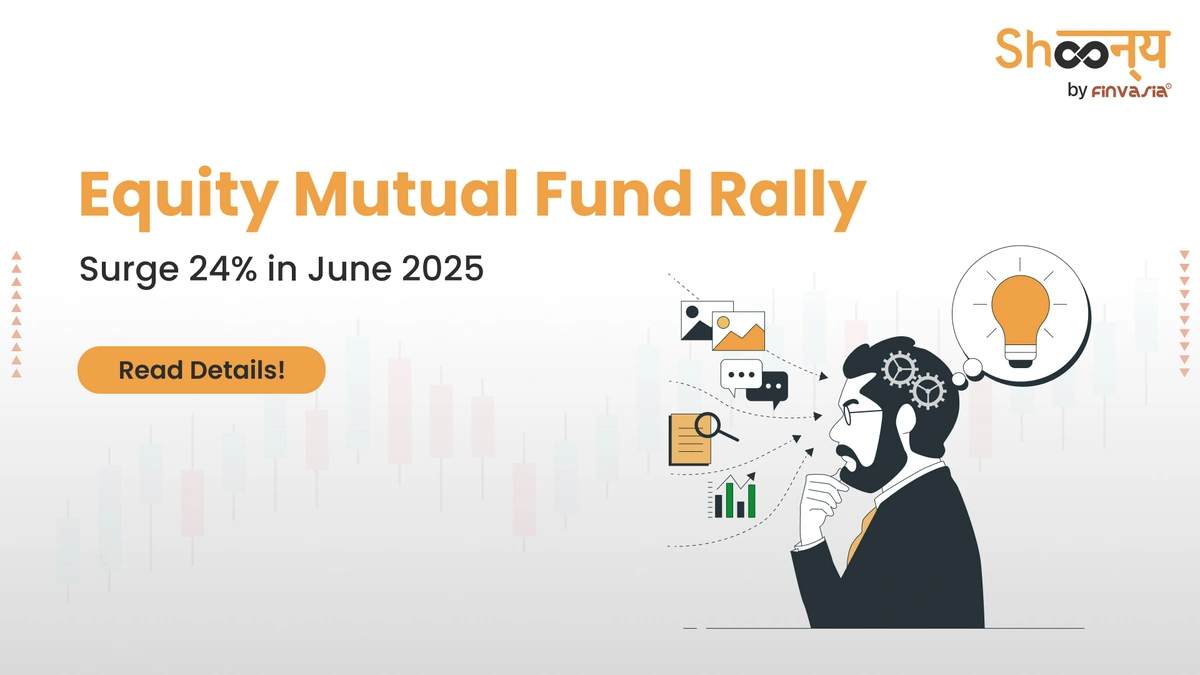Equity mutual fund inflows drop 9% to Rs 30,421 crore in September
So, the latest numbers are in, and it’s a bit of a mixed bag for the Indian equity mutual fund market. Inflows have taken a dip, dropping 9% to ₹30,421 crore in September. Now, the immediate reaction might be a slight furrowing of the brow – is this a cause for concern? Well, let’s not jump to conclusions just yet. Let’s break down why this is happening, what it means for you, and what you should really be paying attention to.
Why the Dip? Decoding Market Sentiments

Here’s the thing: a drop in equity mutual funds inflows doesn’t necessarily signal a market crash. It’s more like a shift in investor sentiment – a collective pause, if you will. Several factors could be contributing. We need to understand the market volatility, profit booking and alternative investment options.
Firstly, remember that the market has been on a bit of a bull run lately. And what happens after a sustained period of gains? People start thinking about profit booking . They’ve seen their investments grow, and they might want to cash in some of those gains – perfectly rational behavior. It’s like planting a seed, watching it grow, and then harvesting some of the crop. Nothing wrong with that!
Secondly, consider the alternatives. Fixed deposits are looking a little more attractive these days with rising interest rates. According to recent reports, some banks are offering quite competitive rates, making them a tempting option for those seeking stability. And let’s be honest – who doesn’t like the idea of a guaranteed return? The availability of alternative investment options might have diverted some funds away from equities.
But – and this is a big but – let’s not overreact. Equity investments are still a cornerstone of long-term wealth creation. As per data released by AMFI, the Association of Mutual Funds in India, while the inflows decreased, the overall assets under management (AUM) for the mutual fund industry remains robust. This suggests that while new investments might have slowed, people are still holding onto their existing equity investments – a sign of continued faith in the market’s potential. AMFI Website
The Silver Lining | SIPs Remain Strong
Now, here’s where things get interesting. While overall equity inflows might be down, Systematic Investment Plans (SIPs) continue to show resilience. SIPs, those disciplined, automatic investments that trickle into the market every month, remain a popular choice. This suggests that retail investors are still committed to the long-term equity story, even if they’re being a little more cautious with lump-sum investments.
What fascinates me is the sheer power of the SIP mentality. It’s like building a house brick by brick, instead of trying to construct the whole thing at once. It smooths out market volatility, allows you to take advantage of rupee-cost averaging, and instills a sense of discipline. And in a market as dynamic as India’s, that discipline can be a real game-changer.
Plus, it demonstrates the growing financial literacy among Indian investors. People are understanding that investing isn’t about timing the market (which is practically impossible), but about time in the market. It’s all about staying invested for the long haul. Check out recent articles for more on this.
Navigating Market Volatility | A Practical Guide
So, what should you do with this information? Well, the first thing is to take a deep breath and avoid knee-jerk reactions. Market fluctuations are normal, and short-term dips are a part of the investing journey. Instead of panicking, use this as an opportunity to review your portfolio, re-assess your risk tolerance, and maybe even top up your SIPs if you have the resources.
A common mistake I see people make is trying to time the market. They try to predict when the market will hit its bottom and then invest a large sum. But honestly, nobody has a crystal ball. It’s far better to stick to your long-term investment plan and let the power of compounding do its magic. Another important aspect is portfolio diversification. Do not put all your eggs in one basket. Portfolio diversification is key for risk management. Consider spreading your investments across different asset classes, such as equity, debt, and gold, to mitigate risk.
Let me rephrase that for clarity: Don’t try to be a market guru. Be a disciplined investor. Automate your investments, review your portfolio periodically, and stay focused on your long-term financial goals. And if you’re feeling overwhelmed, don’t hesitate to seek advice from a qualified financial advisor.
And remember those emotions we talked about? They can be your worst enemy when it comes to investing. Fear and greed can lead to impulsive decisions that you might regret later. Stay rational, stay informed, and stay the course. Investopedia is a great resource for financial education.
Equity Mutual Funds | The Road Ahead
Looking ahead, the Indian equity market remains an attractive long-term investment destination. The Indian economy is growing, consumer spending is rising, and corporate earnings are improving. Plus, the government is pushing ahead with reforms that are aimed at boosting economic growth. This makes the growth of the Indian economy and rising consumer spending strong reasons to stay invested.
However, it’s also important to be realistic. The market will not always go up. There will be periods of volatility and uncertainty. But if you have a long-term perspective and a well-diversified portfolio, you can weather the storms and reap the rewards over time.
What I initially thought was straightforward, but then I realised that it’s a very nuanced topic. The drop in equity fund inflows shouldn’t be taken at face value. It’s more about recognizing the subtle shifts in investor behavior and adjusting your strategy accordingly. Keep an eye on those SIP numbers, stay disciplined with your investments, and remember that the long-term equity story in India is far from over. So stay invested, stay informed, and stay patient – your financial future will thank you for it. Consider investing in small-cap funds and mid-cap funds for potentially higher returns.
FAQ
What exactly are equity mutual funds?
Equity mutual funds are investment vehicles that primarily invest in stocks of companies. They pool money from multiple investors to buy a diversified portfolio of stocks.
Why did the equity mutual fund inflows decrease in September?
Several factors could contribute, including profit booking after a market rally, rising interest rates on fixed deposits, and a general shift in investor sentiment.
Are SIPs still a good investment option?
Yes, SIPs remain a popular and effective way to invest in equity mutual funds. They instill discipline and allow you to take advantage of rupee-cost averaging.
What should I do if I’m worried about market volatility?
Review your portfolio, re-assess your risk tolerance, and consider topping up your SIPs. Avoid making impulsive decisions based on fear or greed.
Where can I find reliable information about mutual funds?
Websites like AMFI (Association of Mutual Funds in India) and financial news portals offer valuable insights and data.
In conclusion, this dip highlights the importance of understanding market dynamics and sticking to your long-term investment strategy. Don’t let short-term fluctuations derail your financial goals.













